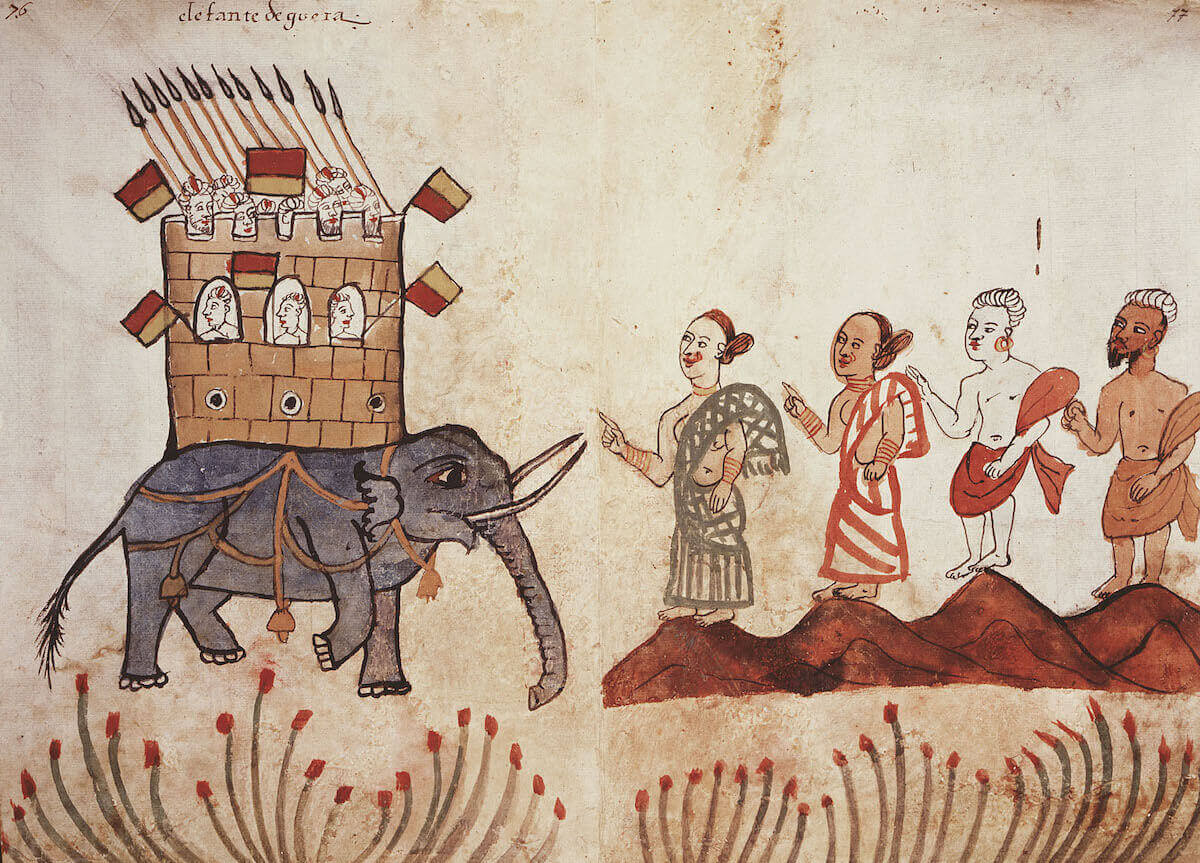There is perhaps no headache greater than that of being a head of state. Or, in fact, being the head of anything. From the ancient world to the present day, it has been recognised that to be a ruler is to be condemned to a life of constant vigilance. You have to spend your days on the look-out for plots and enemies. You have to keep an eye on the unfolding power-plays within your court. And you rarely sleep easy in your bed.
It’s all pretty exhausting: whether you are a monarch ruling over some corner of the ancient world, or the boss of a global media empire, like Logan Roy in the TV series Succession. It’s not even just a human thing. Research among baboons shows that being high-ranking can be as stressful — albeit in different ways — as being low-ranking. The best kind of baboon to be is a middle-ranking one, if you want a comfortable life.
Still, the lure of power is seductive. And so, if you cannot resist the temptations of power, you will need your wits about you. And you will need some good advice for how to navigate through the squalls and the storms that are a fact of life for those in power. This is where the Indian philosopher Kauṭilya comes to the rescue with his Arthaśāstra, or “Treatise on Success.”
The Crooked Kauṭilya
Like many Indian philosophers, we don’t know much about Kauṭilya. His name literally means something like “the crooked one,” and this name fits well with the often amoral prescriptions of the text.
This crooked philosopher is also traditionally identified with the lawmaker Cāṇakya, who lived around 300 BCE, and was prime minister to Chandragupta, the founder of the Mauryan empire. However, both internal evidence from the text and archaeological evidence make this early dating unlikely. Things get more complicated still when the final verse of Arthaśāstra names a third author: Viṣṇugupta. Many have tried to argue that these three were one and the same. But it’s perhaps safer to assume that this text, like many Indian texts, was woven together from multiple threads, and the product of many hands.
The scholar and translator Patrick Olivelle argues there may have been a single writer, called Kauṭilya, who was responsible for the bulk of the text. Nevertheless, he says, the book can be understood as taking shape in three phases. First, there are the sources on which Kauṭilya drew. Then there is the original composition by Kauṭilya, or somebody we now call Kauṭilya. And finally, there is the later tradition of editorial redaction. But whatever the evolution of the text, it is likely that it reached something more or less like its present form between the first century BCE to the first century CE.
The Arthaśāstra was widely read and cited in Medieval India, but some time around the 12th century, it was lost. In the centuries after, it was known only from references in other texts and commentaries. It was only in the early 20th century that a complete manuscript fell into the hands of R. Shamasastry, the Librarian of the Government Oriental Library in Mysore. Shamasastry set about translating the text, publishing the first full translation into English in 1915.
The law of the fish
The Arthaśāstra is a comprehensive manual for statecraft. It covers education, the training of ministers, and the roles of officials in charge of forestry, alcohol, abattoirs, and elephants. It deals with marriage law and inheritance, property rights and land disputes. It explores relations between states, war and peace, alliances and military strategy. It tells you how to build a good fort. It enumerates human vices. It advises on how to put down revolts. And it sets out a wealth of underhand strategies for gaining and maintaining power.
If there is a bigger background to this, it is a view of human life that the text calls the “law of the fish.” This law is simple in principle, even if it leads to all kinds of complexities: big fish eat little fish. This is taken by the Arthaśāstra as a basic fact of human society. The strong devour the weak. The weak are devoured by the strong.

Bodleian Library Oxford. CC By 4.0. Via Wikimedia Commons.
However, this apparently simple principle presents the ruler with some difficult challenges. In terms of foreign policy, the difficulty is how to avoid being devoured by bigger fish who happen to be nearby. Or how to become the biggest fish in the pond, so you can devour others. But internally, the wise ruler should pay attention to the law of the fish as well.
One might think that in a fish-eat-fish world, the ruler could exert unlimited power over the bodies of their subjects, and just swim around gobbling everybody up. However, history and experience show that things are always more complicated. If a ruler abuses their power beyond breaking-point, their subjects may embark on collective action. And although one big fish may eat many small fish, the reverse is also true: many small fish can, working together, devour one big fish. So, the trick is to control one’s subjects as much as one can, but not going so far as to incite revolt.
In this task, one of the most important tools available to a ruler (or a high-ranking baboon) is punishment — or, as Mark McClish puts it in his study of the Arthaśāstra, “constructive coercion.” This, however, is a ticklish business: in making sure that coercion is constructive, the ruler has to tread a careful line. Overly severe punishment can be counter-productive and lead to rebellion. Conversely, if the power to punish is not grasped firmly enough, it can cause laxity and chaos. And this leaves the way open for other potential big fish to throw their weight around, as can be seen in the following passage from the text (all quotes come from Olivelle 2013).
When [punishment] is dispensed improperly, whether in passion or anger or through contempt, it incites even forest hermits and wandering ascetics to revolt; how much more, then, the house- holders! When one fails to dispense it, on the other hand, it gives rise to the law of the fish—for in the absence of the dispenser of punishment, a weak man is devoured by a stronger man…" (1.5.5, p. 69.)
This leads to a kind of social contract theory. The Arthaśāstra says it is precisely because people were oppressed by this law of the fish that they elected the first king, Manu. They tithed him one-sixth of their grain and one-tenth of their merchandise. And in return, Manu ensured there was some breathing space. The war of all against all was held in abeyance, and the weak were protected. “Punishment,” the text says, “when it has training as its foundation, provides enterprise and security to living beings.” (ibid.)
The training of a king
The emphasis on training is central here. Arbitrary and unrestrained use of punishment is not going to serve the interests of the ruler. And the Arthaśāstra makes clear a good ruler needs to underpin their rule with extensive knowledge—of philosophy, of the Vedas or religious texts, of elephants, horses, chariots, and weapons—and with a mastery of their mind and of their senses. An ill-trained ruler is a bad ruler.
The most fundamental aspect of the training of a ruler, the text says, is not book learning, or knowledge of strategy. It is this training of the senses. If you are unrestrained in the use of your senses, you will fail as a ruler. You will become dissolute, you will slacken your vigilance, and this will lead to others exploiting your weakness.
In case the point isn’t driven home with sufficient force, the text helpfully goes on to list some examples of those rulers who, unrestrained in their senses, were brought to their senses sharply by their enemies. After enumerating a series of cases of rulers running riot, the text says:
These and many other kings, addicted to the set of six enemies and not having mastered their senses, came to ruin along with their kinsmen and kingdoms. (1.7.1 p. 71)
The Arthaśāstra acknowledges that the ruler can and should pursue pleasure. It is, after all, one of the benefits of being in charge: think of Logan Roy in Succession flying around on his private jet, hanging out on his private yacht, or enjoying fine dining. But this pleasure is much more circumscribed than those without power might imagine, because it may only be pursued to the point that it doesn’t transgress either law or success. And of these three — pleasure, law, and success — the Arthaśāstra says that it is the last that is paramount. Without success, there can be no law and no pleasure. When the regime is no longer effective, the whole thing falls apart, and along with it, the possibility of pleasure that power provides.
The underhand game of politics
One way the ruler can keep their pleasures in check is by appointing good ministers. A good minister can not only carry out the ruler’s desires, but they can also keep these desires in check and warn when they are tending towards excess. But this raises a further question: how do you choose somebody who is not themselves a power-hungry scoundrel?
Here, the Arthaśāstra’s advice is to subject potential ministers to secret tests of loyalty, to tricks and ruses—and to see how well they fare. By tempting your ministers into wrong-doing, you can winnow out those who are not incorruptible. Those who hold firm are likely to be trustworthy.
This theme of underhand tactics — the trick, the ruse, the secret test — recurs throughout the text. If it is done right, statecraft, according to the Arthaśāstra, is inherently underhand. Not only should the ruler be underhand in how they select their ministers, they should also put in place a whole network of underhand operatives to keep control of their empire.
With the body of ministers, whose integrity has been proven by secret tests, in place, he should commission clandestine operatives: crafty students, apostate recluses, and agents working undercover as householders, merchants, or ascetics, as well as secret agents, assassins, poisoners, and female mendicant agents. (1.11.19 p. 76-7)
The Arthaśāstra is a riot of sneaky ruses: from fomenting dissent, to handing out secret punishments; from poisonings to sexual manipulation; from appeals to vanity to disguising assassins as potential lovers; and from the exploitation of difference and discord to the use of magical arts. Pretty much everything is fair game, if it leads to success and thus also ensures the continuation of law and pleasure.
Finding a space for ethics
It is hardly surprising, as McClish writes, that this unabashed emphasis on “duplicity, violence, and opportunism” made the Arthaśāstra a controversial text. Where is the room for ethics? What about virtue?
But before leaping to the assumption that the Arthaśāstra is completely opposed to morality, we need to set this emphasis on secrecy and sneakiness against the earlier material on training and restraint of the senses. The concerns of the text are certainly more pragmatic than moral, but they are not entirely divorced from morality. Morality is one aspect — and a vitally important one — of the pragmatic calculus in which the ruler must engage. Pragmatically speaking, there can be no taking leave of morality. If you are seen to be rapacious yourself, or if you let others run riot, then there is only so long people will put up with you as a ruler.
So here is a moral that would-be Logan Roys would do well to take on board: from a pragmatic point of view, people in general demand a certain level of morality. And an effective, or successful, ruler ignores this fact at their peril.
Further Reading
Mark McClish and Patrick Olivelle’s The Arthaśāstra, Selections from the Classic Indian Work on Statecraft (Hackett 2012) is a great introduction to the text.
For a more complete scholarly account, try Patrick Olivelle’s King, Governance, and Law in Ancient India (Oxford University Press 2013).
Also well worth reading is Mark McClish’s The History of the Arthaśāstra: Sovereignty and Sacred Law in Ancient India (Cambridge University Press 2019).
Finally, have a read of this piece on Han Feizi, to see how similar concerns played out in the context of ancient China.
Image: Portuguese image of an Indian war elephant, c. 1540. Public domain via Wikimedia Commons



